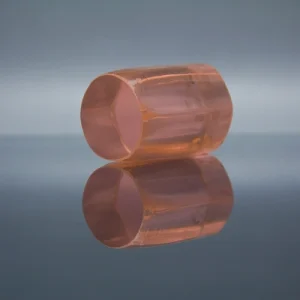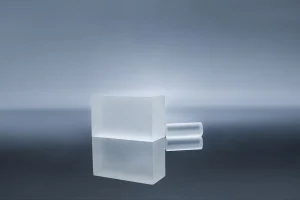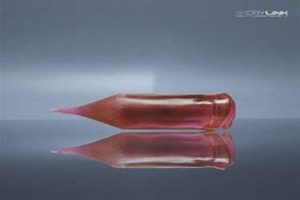Continuous wave (CW) lasers, characterized by their steady-state emission, have found a wide range of applications in industries, medicine, and research. The heart of these lasers lies in the active laser medium. Over the years, neodymium-doped materials like Nd:YAG, Nd:YLF, and Nd:YVO4 have emerged as popular choices. In this article, we offer a comprehensive comparative analysis of these three laser materials.
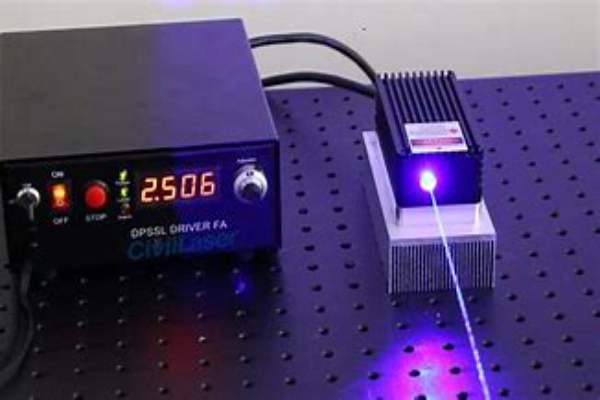
Overview of Nd-Doped Laser Materials
The evolution of laser technology has seen many transformative materials, but few have been as influential as the Neodymium-doped (Nd-doped) compounds. These materials, equipped with unique optical attributes, play a pivotal role in a myriad of laser applications.
Nd:YAG (Neodymium-doped Yttrium Aluminum Garnet):
An undisputed leader in the realm of Nd-doped materials, Nd:YAG stands out for its robust nature and versatility. Its crystalline structure ensures longevity, and its outstanding thermal conductivity is a testament to its resilience under high-power operations. But what truly differentiates Nd:YAG is its adaptability. Whether it’s a precision-required medical procedure or a rigorous industrial operation like welding, Nd:YAG is invariably the go-to choice for professionals.
Nd:YLF (Neodymium-doped Yttrium Lithium Fluoride):
While not as renowned as its Nd:YAG counterpart, Nd:YLF holds its ground with unique characteristics. It’s particularly notable for its extended fluorescence lifetime—a feature that renders it indispensable in pulsed laser operations. When there’s a need for exacting control over laser pulses, Nd:YLF shines through, underlining its niche yet vital role in laser technology.
Nd:YVO4 (Neodymium-doped Yttrium Orthovanadate):
Despite being a newer addition, Nd:YVO4 is rapidly gaining traction. This is largely attributable to its stellar optical properties that make it especially efficient in diode-pumped systems. As technology gravitates towards more compact, efficient laser systems, Nd:YVO4 is well-poised to play an ever-growing role, solidifying its position in future laser applications.
In summation, the Neodymium-doped materials—each with its distinct advantages—collectively propel laser technology forward. As we advance, it’s evident that the potential and applications of these materials will continue to be at the heart of innovations, shaping the future landscape of laser-centric applications.
Decoding Wavelength & Spectral Properties
The world of laser technology is complex and diverse, much like the saying, “Different strokes for different folks.” This adage resonates strongly when understanding the interactions and applications of laser materials, particularly the emitted wavelengths. The specific wavelengths emitted by these materials play a critical role in determining their interactions with different mediums and, consequently, their applications.
Nd:YAG (Neodymium-doped Yttrium Aluminum Garnet):
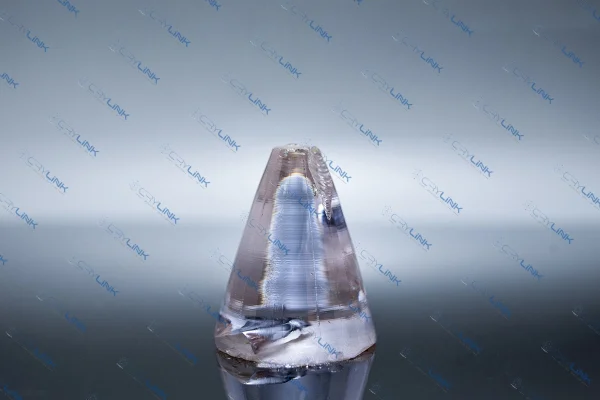
A mainstay in laser applications, Nd:YAG is known for primarily operating at the wavelength of 1064 nm. However, its spectral prowess doesn’t end there. Spanning additional wavelengths like 946 nm, 1120 nm, 1320 nm, and 1440 nm, it offers a broad spectrum that underpins its incredible versatility. This expansive range becomes the foundation for its widespread use. In the medical realm, its wavelengths are crucial for procedures requiring deep tissue penetration. In the manufacturing sector, these wavelengths are adept at handling tasks from precise cuts in metal to detailed engraving. Such a vast spectral canvas ensures that Nd:YAG remains a top choice across various sectors.
Nd:YLF (Neodymium-doped Yttrium Lithium Fluoride):
Nd:YLF carves its niche through distinctive emission lines at 1047 nm and 1053 nm. These specific lines cater to orthogonal polarizations, presenting a unique attribute not commonly found in other laser materials. This polarization sensitivity makes Nd:YLF invaluable in specialized areas. Whether it’s advanced optical communication systems where polarization state management is critical or high-resolution microscopy where the direction of light’s electric field oscillation can reveal hidden details, Nd:YLF’s unique characteristics guarantee its significance.
Nd:YVO4 (Neodymium-doped Yttrium Orthovanadate):
Sharing the 1064 nm wavelength with Nd:YAG, Nd:YVO4 introduces another dimension with its distinct 1342 nm emission line. This specific wavelength can be crucial in certain non-linear optical processes or specialized imaging applications. As industries evolve and look for nuanced laser interactions, Nd:YVO4 stands poised to cater to those niche requirements.
In essence, the rich tapestry of wavelengths offered by these neodymium-doped materials represents the depth and breadth of laser technology. Recognizing and harnessing these wavelengths ensures that each material is utilized to its fullest, echoing the sentiment that there truly is a different stroke for every folk in the world of lasers.
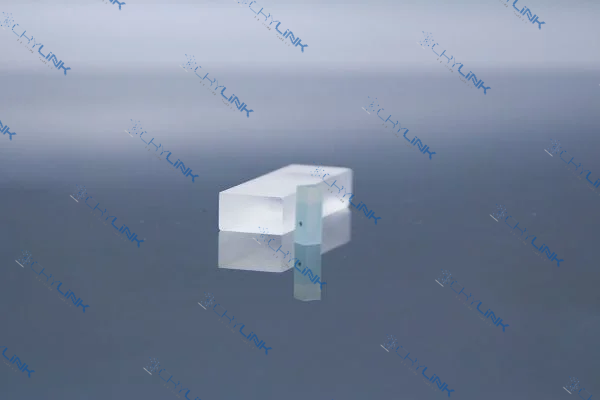
Delving into Efficiency & Power Scaling
In the intricate world of laser technology, the equilibrium struck between efficiency and power scaling is paramount. This delicate balance, akin to a tightrope walk, can dictate the overall success of a laser-based system or application. With an array of neodymium-doped laser materials in the fray, understanding their strengths and limitations in these aspects becomes essential.
Nd:YAG (Neodymium-doped Yttrium Aluminum Garnet):
Emerging as a true stalwart in the domain of power scaling, Nd:YAG is nothing short of impressive. What sets it apart is its inherent ability to amplify its output consistently as the input power increases, without facing significant inefficiencies or losses. Imagine a performer escalating their act’s intensity without missing a beat; that’s Nd:YAG for you in the laser arena. Such a feature becomes invaluable in scenarios requiring immense power – be it the precision demanded in medical surgeries or the robustness required in industrial welding and cutting. In applications where stability, reliability, and high power are non-negotiable, Nd:YAG stands tall as the undisputed champion.
Nd:YLF (Neodymium-doped Yttrium Lithium Fluoride):
While Nd:YLF might seem overshadowed when placed head-to-head with Nd:YAG in sheer power scaling, it has its unique allure. This material offers a commendable efficiency, and when combined with its other distinctive characteristics, it finds its special place in the laser world. Not every laser application is a test of brute strength. There are realms where finesse, precision, and other attributes take precedence. In such scenarios, Nd:YLF emerges as a preferred choice, harmoniously blending its efficiency with its other traits to cater to niche requirements.
Nd:YVO4 (Neodymium-doped Yttrium Orthovanadate):
The realm of diode-pumping has a shining star, and that’s Nd:YVO4. In specific scenarios, especially when diode-pumped, this material can boast of efficiencies that might even surpass the revered Nd:YAG. Such performance is particularly critical in applications where space is at a premium, and yet there’s no room for compromise on performance. Compact laser systems, where size matters as much as efficiency, often turn to Nd:YVO4 as their trusted ally.
To conclude, while each material showcases its strengths in efficiency and power scaling, their collective presence offers a rich palette to laser technologists. This diversity ensures that the right material can be chosen for the right task, optimizing both efficiency and performance.
Optical Characteristics
In the realm of laser technology, where performance and precision often intertwine, understanding the intrinsic optical properties of laser materials is more than just academic; it’s fundamental to maximizing their potential. Delving deeper into these properties offers a window into the very heart of these materials, revealing what makes them tick and how they can be optimally harnessed.
Nd:YAG (Neodymium-doped Yttrium Aluminum Garnet):
One of the hallmarks of Nd:YAG is its unmatched thermal conductivity. This might seem like a technical detail at first, but in real-world applications, it plays a pivotal role. High-power laser operations, by their very nature, generate significant heat. Unchecked, this heat can distort the laser’s output, leading to inefficiencies or even potential damage to the system. But Nd:YAG rises to the challenge, dissipating this heat with remarkable efficiency. It’s akin to a seasoned athlete maintaining peak performance even under the most strenuous conditions. This resilience ensures the laser’s stability, making Nd:YAG a preferred choice in settings where operations might extend over long durations without any drop in performance or precision.
Nd:YLF (Neodymium-doped Yttrium Lithium Fluoride):
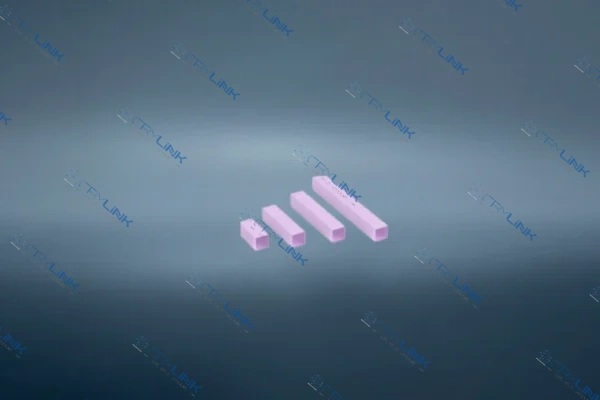
The world of optics is filled with complexities, and Nd:YLF brings a touch of unique intrigue with its anisotropic nature. In layman’s terms, this means the material behaves differently when viewed or used along different directions or axes. This characteristic manifests as a dual wavelength operation in the world of lasers, a trait that’s quite rare and highly prized. Imagine having a multifunctional tool that adapts to the task at hand; that’s Nd:YLF for specific advanced optical systems. This flexibility allows for nuanced control and modulation in systems that demand precision and adaptability, making Nd:YLF a coveted material in specialized scenarios.
Nd:YVO4 (Neodymium-doped Yttrium Orthovanadate):
In the pantheon of neodymium-doped materials, Nd:YVO4 is often associated with the term “high gain”. This means that even a whisper of input can be transformed into a shout of output. In scenarios where every ounce of energy counts, Nd:YVO4’s ability to amplify even minimal inputs becomes a game-changer. Especially in compact laser systems where space and efficiency are at a premium, this characteristic ensures that maximum performance is squeezed from every bit of input, making Nd:YVO4 a prime candidate for such applications.
In sum, while all these materials fall under the umbrella of neodymium-doped laser materials, their unique optical properties set them apart. Recognizing and respecting these nuances is the key to unlocking their full potential in myriad applications.
Reflections on the Future of Neodymium-Doped Laser Materials
Navigating the vast landscape of Continuous Wave (CW) laser technology, it’s evident that the choice of material is not a mere selection but a calculated decision driven by specific application needs. Nd:YAG, with its resilient nature and wide application spectrum, often emerges as the backbone for demanding high-power scenarios. Nd:YLF, on the other hand, with its unique dual wavelength capabilities, provides unparalleled flexibility, especially in advanced optical systems. Meanwhile, Nd:YVO4, showcasing exceptional efficiency in diode-pumped scenarios, has started marking its territory, especially in compact laser applications.
FAQs
- Q1: Why is Nd:YAG widely used despite newer materials emerging?
A1: Nd:YAG’s widespread use is attributed to its robustness, high thermal conductivity, and versatile application range. - Q2: In which applications is Nd:YLF preferred over Nd:YAG?
A2: Nd:YLF is preferred in ultrafast pulse generation and certain specific spectroscopy applications due to its longer fluorescence lifetime. - Q3: How does Nd:YVO4 compare in efficiency with Nd:YAG?
A3: When diode-pumped, Nd:YVO4 can sometimes exhibit higher efficiency than Nd:YAG. - Q4: Are there any thermal challenges associated with these laser materials?
A4: Yes, while Nd:YAG has excellent thermal conductivity, other materials may face challenges during high-power operations, requiring efficient cooling mechanisms. - Q5: Can these materials be used in pulsed laser operations?
A5: Yes, while this article focused on continuous wave lasers, these materials also find applications in pulsed laser systems.


